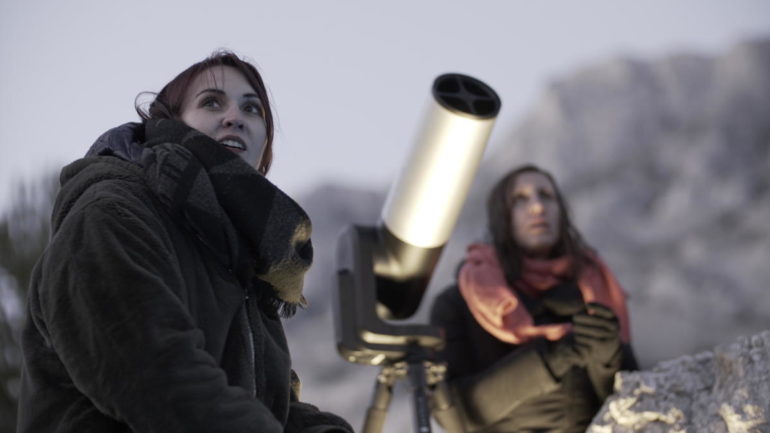The citizens must defend the Earth.
Unistellar
A man turned up at my door a couple of weeks ago.
more Technically Incorrect
He was wearing a large oblong backpack and looked for all the world like a millennial Ghostbuster.
And then I remembered what was going on. I’d seen this headline: “Help Defend the Planet by Detecting Infamous Asteroid Apophis!” and was naturally intrigued.
Actually, it was my wife who was even more stirred. She’s a scientist whose idea of relaxation is to scroll through Space Instagram.
The dire planet defense warning — and encouragement for citizen scientists to come together for mankind — had come via a company called Unistellar.
It’s the creator of the eVscope, a digital telescope that has “unprecedented power and simplicity.” If only America could claim the same.
Many telescopes just don’t see that much. My wife’s basic Celestron AstroMaster 130EQ struggles terribly with clouds.
The eVscope’s creators claim it can see far more.
Which is where it may come in useful this Sunday at 11.50pm Central Time. That’s when Near-Earth Asteroid 99942 Apophis passes in front of a star and is visible, so says the Observatoire de Paris, along a path traced from roughly the north-west to the south-east of the US.
Unistellar asks a disturbing question about this asteroid: “Will it destroy spacecraft and satellites, or make catastrophic, direct contact with Earth?”
PR fluff and bunkum, surely. And anyway, this potentially hazardous asteroid is supposed to come (vaguely) our way only in 2029.
But I wanted to see for myself whether this telescope could make a difference for people in spotting it on Sunday, just in case.
Movement isn’t easy right now, so I asked Unistellar’s Chief Scientific Officer Dr. Franck Marchis if he’d perch himself on our deck, sip a glass of socially-distanced wine (Cabernet Franc, naturally), get something to eat and demonstrate the company’s portable, digital telescope.
Dr. Marchis slipped off his backpack with the same ease he sipped his Cabernet. He set the telescope up within seeming seconds.
Next, he demonstrated how you could control it with your iPhone.
He toggled and the telescope obeyed.
The eVscope’s makers make outlandish claims. Unistellar says this portable thing is 100 times more powerful than a regular telescope.
The results, however, were extraordinary. Says my wife.
You see, the clouds came over, but she still announced with a rare excitement: “I’ve just seen Orion’s penis!” That, apparently, is how some astronomers mirthfully refer to Orion’s nebula.
The eVscope pinpoints any object in the sky so that you can stare at it and realize just how insignificant a speck in the firmament you really are.
When I took a look through the viewfinder, I confess it was the sharpest and most imposing image I’d seen through a telescope.
There is, of course, a slight drawback with this machine. It costs around $2,999. Which isn’t the sort of sum that can be afforded by every citizen defender of the planet.
Still, I asked Dr. Marchis what were the chances of Apophis bringing a little apocalypse to one or two satellites — or even to our planet.
“We can’t answer this until we have a refined orbit of Apophis,” he told me.
Oh, but come on. Frighten us a little Dr. Marchis.
“Currently its orbit places it inside the geosynchronous orbit, less than 36,000km from Earth, in 2029,” he said. “So it will cross this virtual sphere made of around 400 satellites twice. However, its orbit is inclined away from the equator so the likelihood of an impact is small. If its orbit is bringing it even closer to Earth, then the probability of impact will increase since we have more satellites at lower orbit.”
We have been warned and Dr. Marchis should know. He’s actually had an asteroid named after him.
